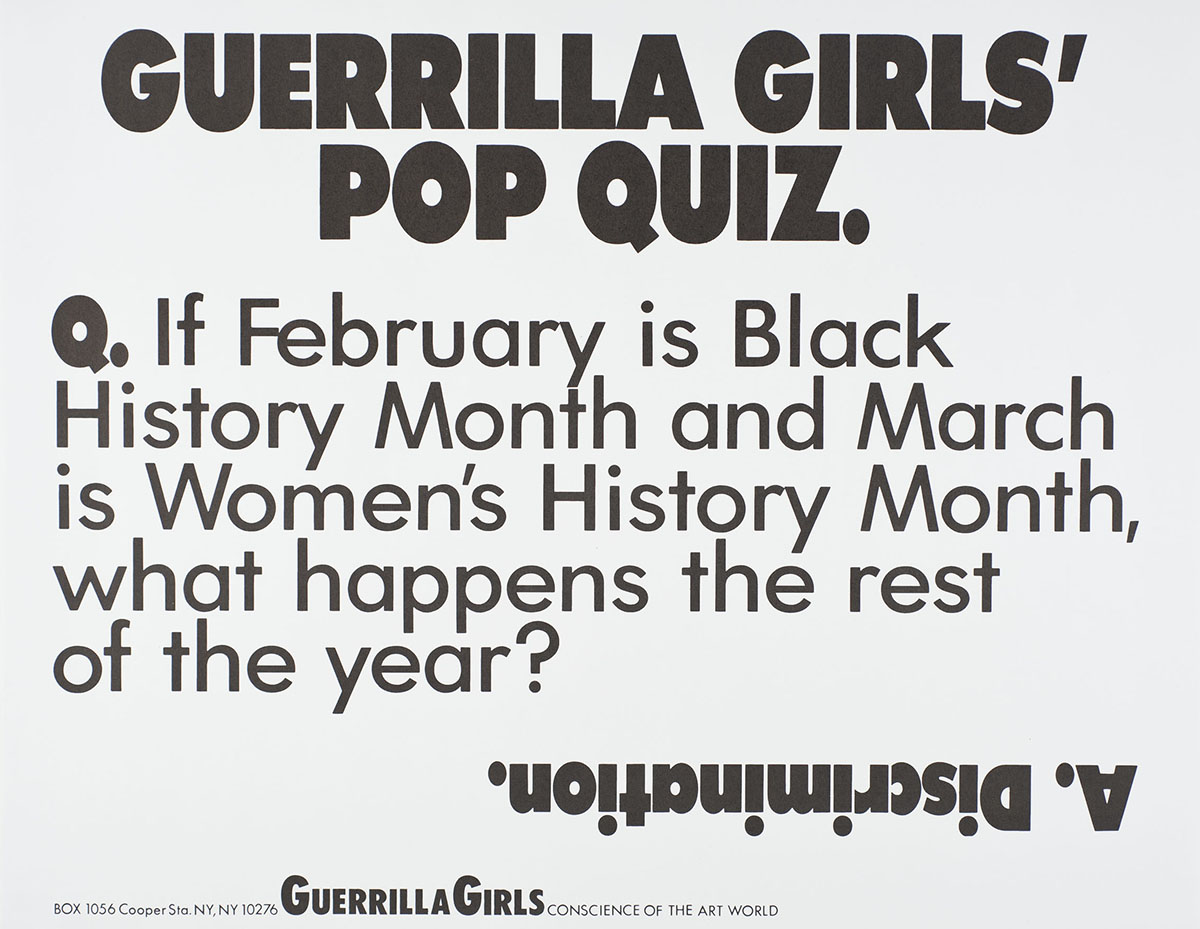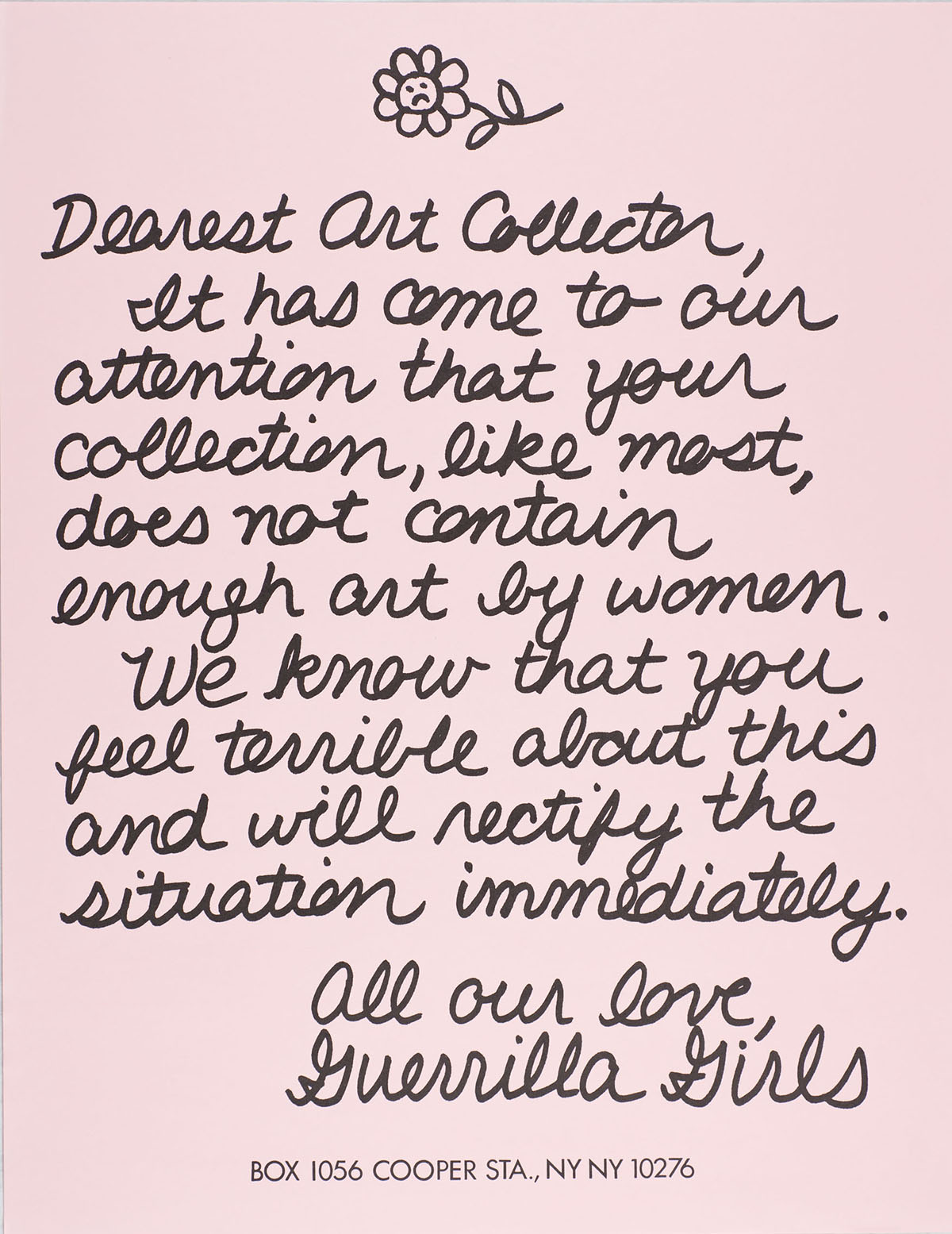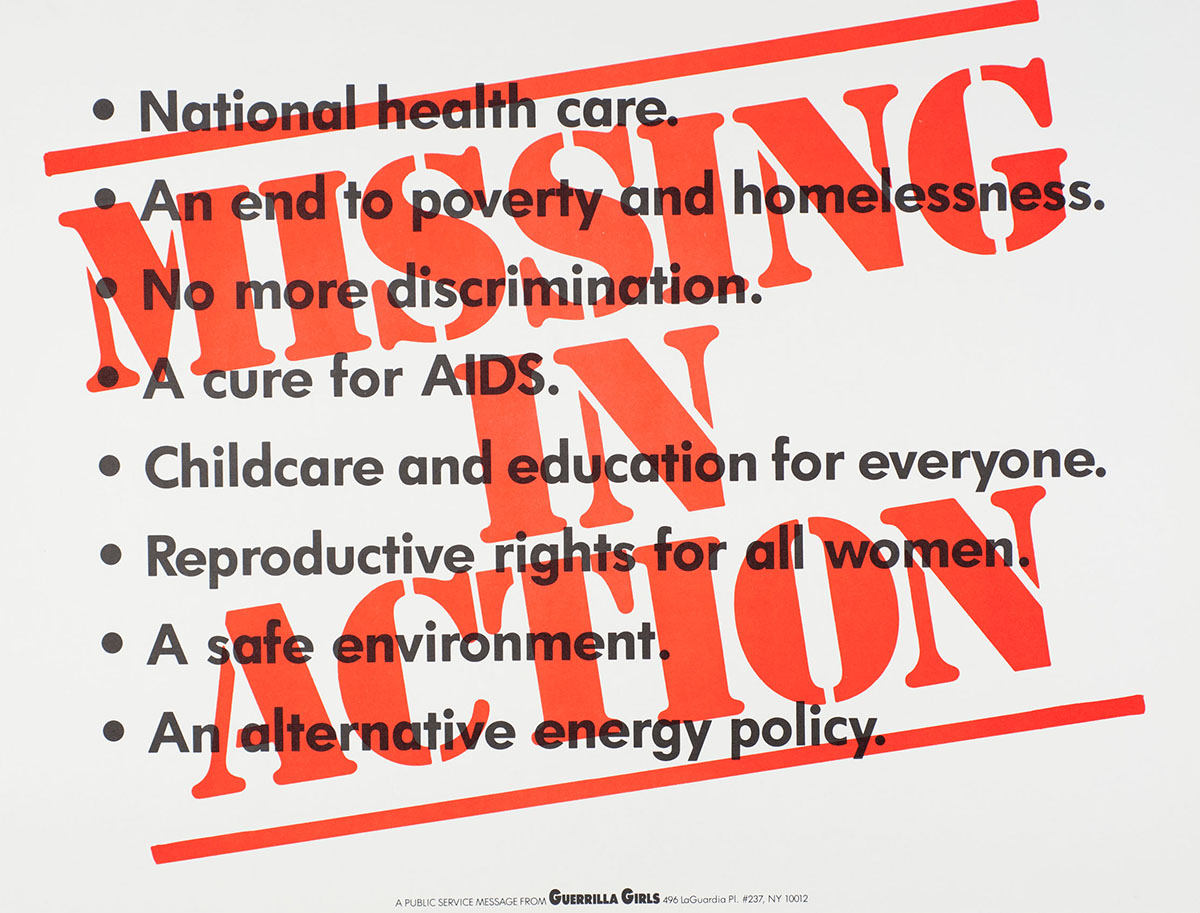
Meet the Guerrilla Girls

“Unless all the voices in our culture are in the history of art, it’s not a history of art, it’s a history of power.” —Frida Kahlo, member of Guerrilla Girls
The Guerrilla Girls is a group of feminist activist artists—each with a pseudonym referring to a woman artist no longer living—whose collaborative work exposes gender and racial gaps in the art world. They launched their practice in 1985 to protest the exhibition An International Survey of Painting and Sculpture at the Museum of Modern Art in New York. Advertised as an accurate survey of the most significant contemporary artists of the mid-1980s, the show featured 148 men, 13 women, and no female artists of color.
Scroll down to dig into the humor, data, and flashy graphics of the group’s various posters. Although some posters date to more than thirty years ago, their purpose of calling out injustices, undermining the mainstream, and promoting intersectional feminism remains relevant.
Visit the museum to see these works currently on view in our Scaife galleries.



